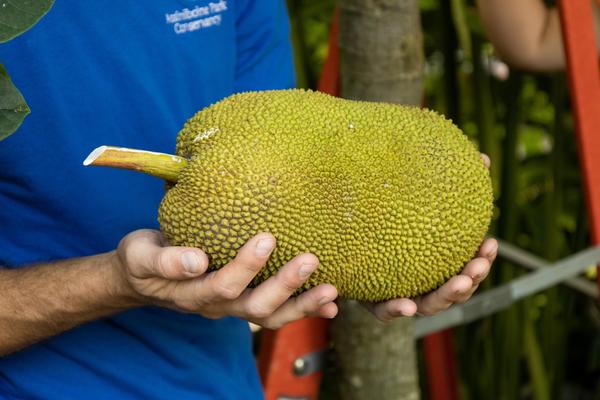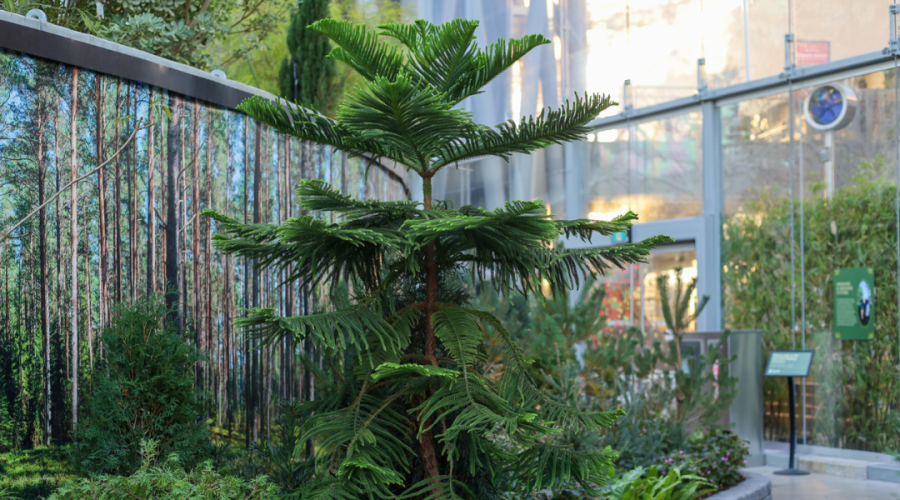The Jackfruit tree in the Hartley and Heather Richardson Tropical Biome is producing fruit!
In its natural habitat, the flowers would be insect or wind-pollinated, but because we do not have these natural means of pollination, this plant was hand-pollinated by Mitchell, one of the gardeners at The Leaf!
Two successful attempts of hand-pollination were made on the tree in the Tropical Biome this past June. This can be tricky as pollination needs to occur during the proper developmental stage of male flowers and at the right receptivity stage of female flowers. Hand-pollination is achieved by dragging a male flower over top of the female flower.
Jackfruit are monoecious, meaning they have separate male and female flowers growing on the same plant.
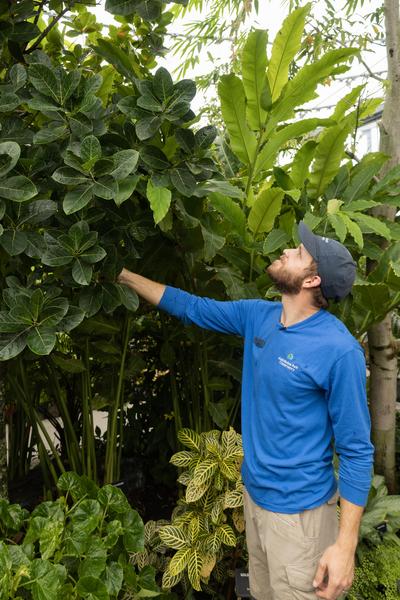
Mitchell with the jackfruit tree, Artocarpus heterophyllus
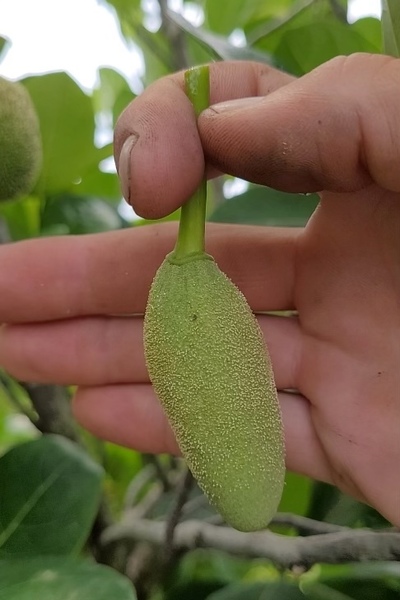
Male flower
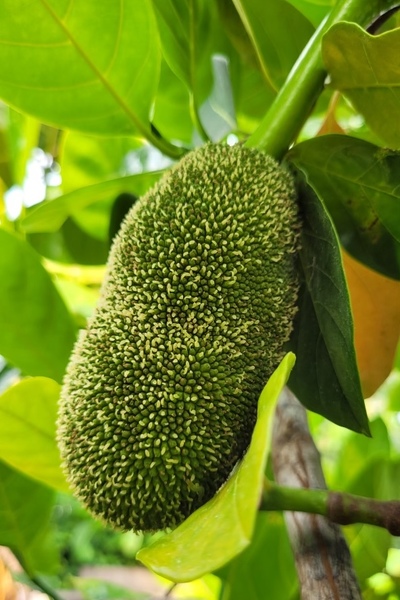
Female flower
When pollination occurs, the tree produces large, edible and delicious fruit! Some have claimed that this fruit was the inspiration for the flavour of Juicy Fruit gum. You may even smell the sweet aroma as you walk by the tree.
The average fruit weighs between 10-25 lbs (4.5-12 kg) but can grow over 100 lbs (45kg). The unripe fruit can be cooked as a vegetable and used as an alternative to meat. The fruit contains many nutrients such as fibre (soluble & insoluble), protein, vitamin A, vitamin C, magnesium, potassium, copper, manganese and riboflavin.
Jackfruit trees can begin flowering after four years of growth, produce fruit for up to 60 years, and live for up to 100 years.
The harvested jackfruits were taste tested by our horticulture team and given to Gather Craft Kitchen & Bar to be incorporated into their dishes.
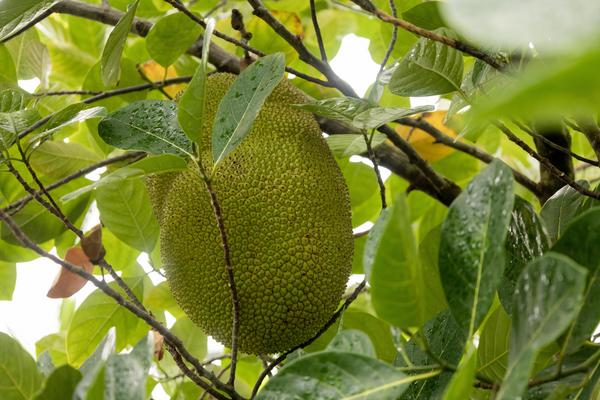
Jackfruit Facts
Family: Moraceae (related to Figs and Mulberries)
Endemic to: India, in deep rich alluvial loamy soil or red laterite soil with a pH value of 6.0-6.5. Well-draining soil with high amounts of organic materials is required for optimal growth.
Hardiness: USDA zones 10-12
Average height: 9-21 m (30 to 70 ft)
Average canopy spread: 6-15 m (20 -50 ft)
Bloom time in the Tropical Biome: Spring and Summer
Light intensity: Full sun with afternoon shade
Flower: Cauliflorus, Monoecious (separate male and female inflorescences borne on the same plant)
Leaf: Broadleaf Evergreen, irregularly shaped leaves when immature. Simple and entire when mature. Green and elliptical-obovate in shape.

While Jackfruit allergies are uncommon, they do exist and are more common among people also allergic to latex and/or birch pollen.
Jackfruit timber has a bright yellow colour and is termite resistant making it widely used in the construction of furniture, pergolas, stairs, doors and windows, it can also be used for making instruments. Jackfruit bark can be used for making an orange dye.
Jackfruit is a widely documented plant and holds significant meaning in many cultures all around the world. Next time you visit the Tropical Biome, see if you can spot the jackfruit growing!



